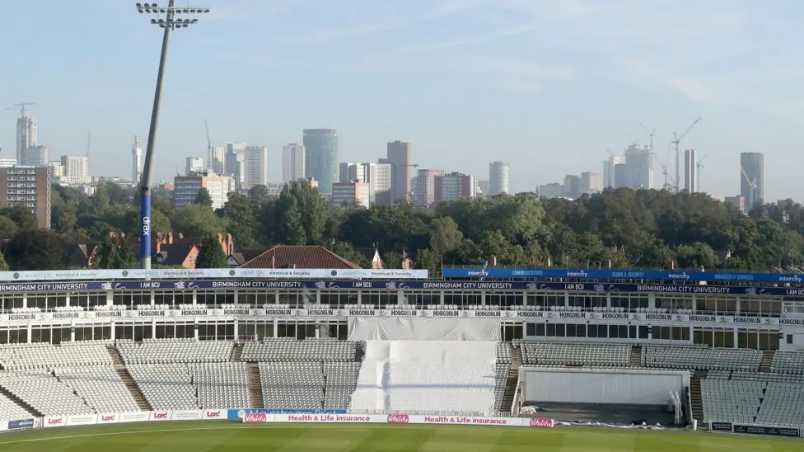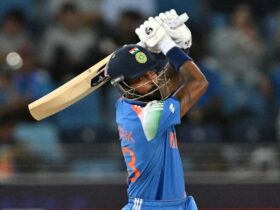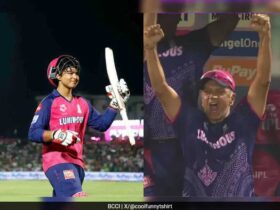The domestic game has been in something of a state of flux in recent years, but the 2025 season will take on a new look which the ECB hope will last for years to come.
A 35-team county competition of varying standard ended in 2019, and since 2020, counties have fed into eight regional teams, which have formed the top tier of women’s cricket, competing in the Charlotte Edwards Cup and Rachael Heyhoe Flint Trophy.
This summer it will be replaced by a three-tiered domestic competition structure made up of teams from individual counties.
The ECB has called it “the next stage in the evolution of women’s cricket” and says it will invest a further £4million to £5m into the game between 2025 and 2028, taking the total to around £16m.
The ECB hopes the plans could lead to an 80% increase in professional women’s players in England and Wales by 2029.
A year ago the eight counties awarded Tier 1 status were Durham, Essex, Hampshire, Lancashire, Nottinghamshire, Somerset, Surrey and Warwickshire.
Yorkshire said they were “surprised and disappointed” not to be in the top tier, making a case to the ECB, which – a month after the initial announcement – agreed to allow them into Tier 1 from 2026. Glamorgan will be allowed in from 2027.
Last July, the ECB announced the Tier 2 clubs: Derbyshire, Glamorgan (until 2027), Gloucestershire, Kent, Leicestershire, Northamptonshire, Middlesex, Sussex, Worcestershire and Yorkshire (until 2026).
Overall, the Tier 1 counties will be required to have a minimum of 15 contracted players with a minimum salary of £20,000, the same as new male players.
Those counties will be required to invest a minimum of £500,000 on player salary costs, but not exceed £800,000.
Women in Tier 2 will have no such guarantee – most will likely be semi-professional, with pay left up to their individual clubs.
The eight top-tier sides will contest the One-Day Cup and T20 Blast while the 10 Tier 2 sides will compete in Division Two of those competitions, while more than a dozen more National Counties will join them to take part in the new Women’s County Cup.
There will be no promotion or relegation for the first three seasons, though the top tier will be expanded in 2029 to include two more teams, but the ECB has not yet decided which ones.
‘New format can attract new fanbase’
Former England captain Heather Knight hopes the changes to the women’s domestic game will help to bring “a new fanbase” to the sport.
Knight has signed for Somerset’s new women’s team for 2025, one of eight counties to merge under the same umbrella as their male counterparts and be given Tier 1 status in the revamp.
The 33-year-old previously captained Western Storm – which covered the counties of Somerset and Gloucestershire – leading them to titles over her eight years with the club.
“I think it’s a really good move for women’s cricket to merge with the men’s counties and it seems like the next logical step in the development of the women’s game to put those together and really drive the women’s game forward alongside the men’s,” Knight told BBC Radio Somerset.
“It’s an exciting time, probably a little bit of a transition period. It might take a few years to get things bedded in, but I think Somerset have been really welcoming.”
Knight’s nine-year stint as England captain ended last month, having led the team to the 2017 World Cup title.
Knight, who led the side in eight Tests, 94 one-day internationals and 96 T20s, with 134 wins from her 199 matches in charge, will join her England team-mates, all-rounders Charlie Dean and Danielle Gibson, in Taunton next season.
“I think it’ll bring hopefully a new fanbase to women’s cricket now that it’s under the Somerset umbrella,” Knight added.
‘Time to prove Kent should be in Tier 1’
While the revamp of the women’s game has been largely met with positivity, the impact has not been universally popular.
Kent’s captain Megan Belt has a full-time job as a teacher at Kent College in Canterbury and with her club confident in their bid for Tier 1 status, Belt was hoping she and her team-mates would be playing professional cricket this summer.
“How we didn’t get Tier 1, I don’t quite understand,” the 27-year-old told BBC South East Today.
“It was hard to take when other counties got it and we didn’t when we’ve produced so many England players and our pathway is so strong.”
Former Kent chair Simon Philip described the decision as “difficult to swallow”.
The club have since formed a steering group that includes former Minister for Sport, Dame Tracey Crouch, to help them on their path to the top league as soon as possible.
“It is really tough and if I was a man playing for Kent, I probably wouldn’t be a teacher,” Belt added.
“But women’s sport and women’s cricket is heading in the right direction, it’s time to prove in Tier 2 that we should be in Tier 1 and that’s what we’re trying to do.”











Leave a Reply